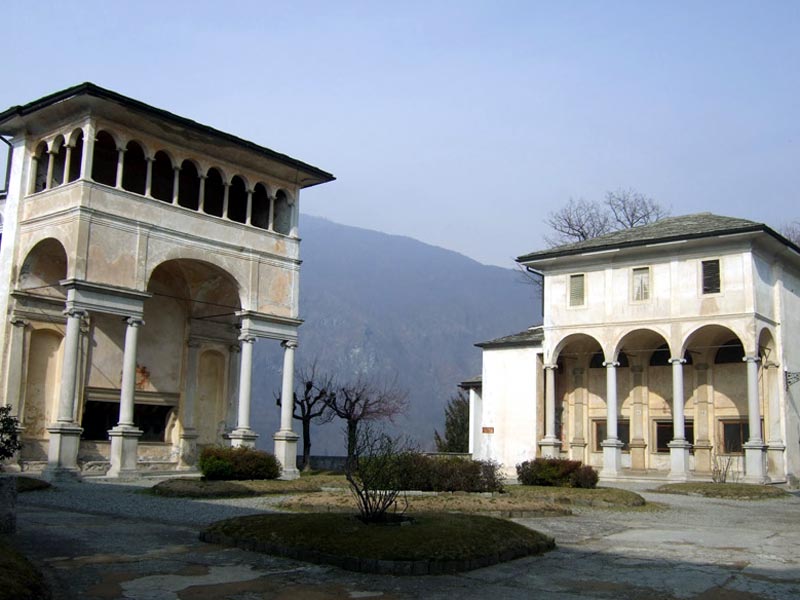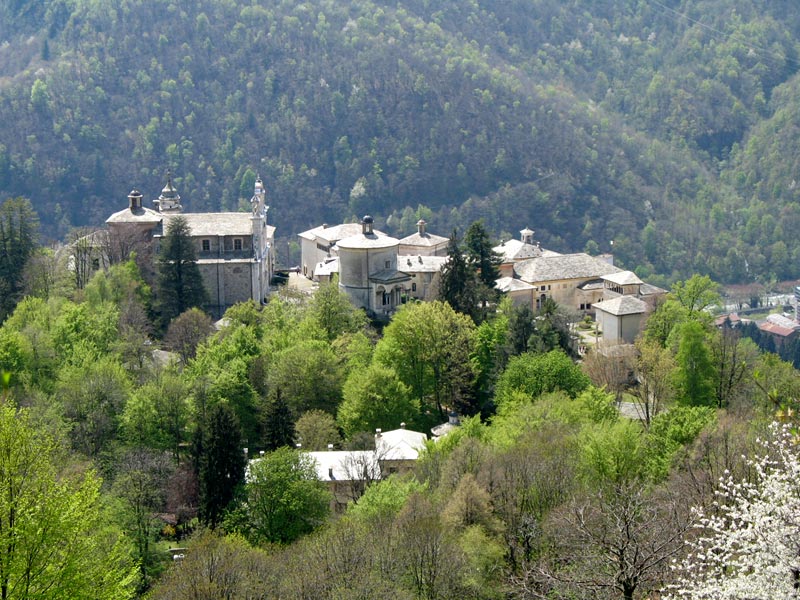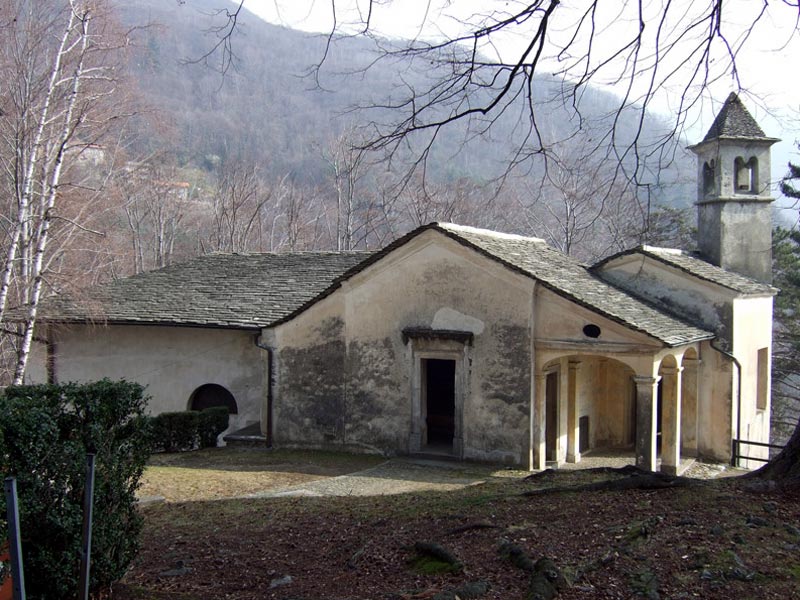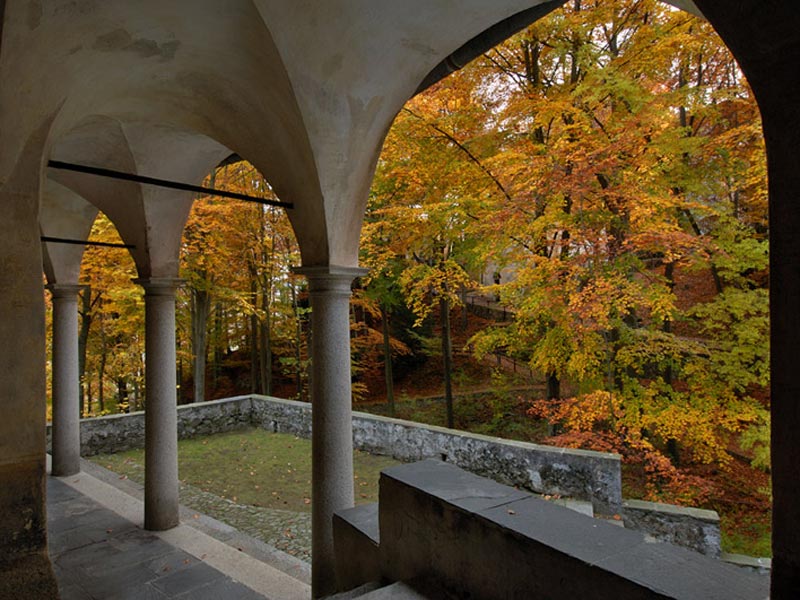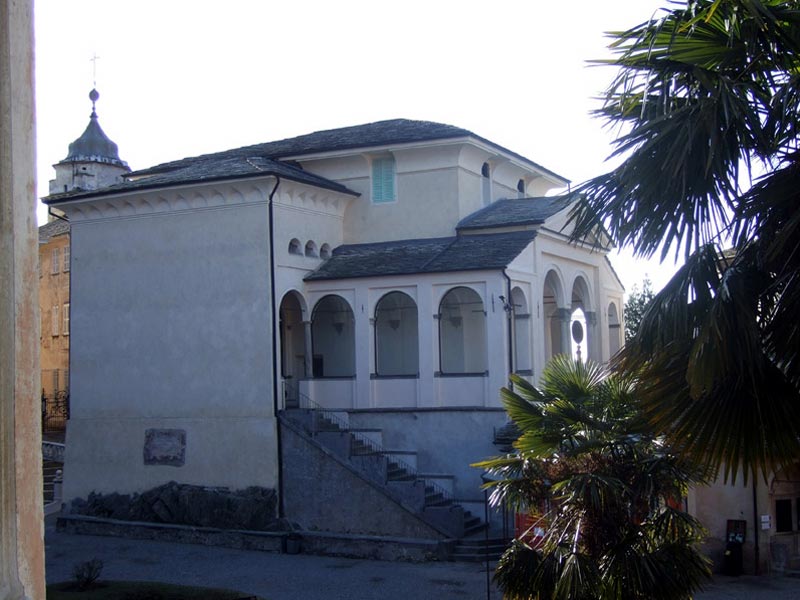Points of Interest
Sacro Monte di Varallo
Sacro Monte was created by famous architects (G. Alessi, B. Alfieri), painters, and sculptors (G. Ferrari, Giovanni D'Enrico, Tazio da Varallo, E. Prestinari, Tabacchetti, Morazzone). The devotional complex was founded in 1491 and represents the most ancient Sacro Monte and the most important one from the artistic and religious point of view.
The area within the sacred fence is divided into two well-distinct areas. The first area is rich in plants and green, and is organized like a garden scattered with various chapels. The second area is situated on the top, preceded by Porta Aurea, and consists of small buildings full of porticoes facing two squares, Piazza dei Templi (the religious square) and Piazza dei Tribunali (the civil square), in the attempt to repropose the town of Jerusalem.
The Entrance Door
A monumental entrance door opens inside the walls delimiting the ancient enclosure, underlying the analogies between Sacro Monte and the historical towns. The walls and the door represented the border between the sacred space for prayer and silence and the surrounding area.
The Complexes
- Nazareth
The complex derives from the association of different nuclei for over one century.
- Bethlehem
The first nucleus of this complex is mentioned in the 1514 guidebook of Sacro Monte. At that time, it included images of the birth of Jesus in a trough, the Adoration of the Magi and the presentation in the Temple, multicolored wooden or terracotta sculptures or paintings.
- Pilate's Palace
An ancient Pilate's Palace already existed in the 16th century. The new Palace belongs to the plan regarding the upper area of Sacro Monte, according to the will of Bishop Carlo Bascapè who wanted to gather in this building the main mysteries of the Passion of Christ.
- The Calvary
The building was started in the early 16th century to house the Chapel of the Crucifixion (c. 38) and includes part of the rock outcropping on the summit of the hill. Already mentioned in 1514, the interior was at that time more simple than the project realized by Gaudenzio Ferrari between 1517 and 1520.
Basilica of Our Lady of the Assumption
The ancient church of Sacro Monte, built in the late 15th century and dedicated to Our Lady of the Assumption, was situated where today the Hotel "Casa del Pellegrino" lies and, with the passing of time and the increasing fame of Sacro Monte, was no longer enough.
The works for the new church started in 1614 thanks to the donations of Agostino Beccaria, a nobleman from Pavia, and the charity of the pilgrims. First of all, the choir was built: it was finished in 1642 when, with a solemn ceremony, the old wooden statue of the sleeping Madonna was transported from the old to the new church: it is one of the most ancient statues of Sacro Monte, already documented in 1498, ascribed to Gaudenzio Ferrari, preserved today in a chapel.
The Pedestrian Uphill Path
Along the ancient pedestrian road climbing from Madonna delle Grazie church to Sacro Monte, there are five chapels.
Pianaccia Chapel was decorated in a rococo style by Antonio Borsetti, but was painted again by Andrea Bonini in the late 19th century. The frontal of the altar is by Giuseppe Antonini (1885).



